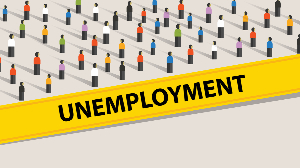
The number of jobless people is expected to shrink to its lowest level for years.
While this is widely seen as a good thing, it is expected to spur wage increases which could prompt price rises and push inflation even higher.
The Reserve Bank (RBNZ) is already straining to hold back the door against inflation, which has reached 5.9% and is expected to surge past 6% later this year.
A significant fall in unemployment could make the RBNZ's job harder.
The Kiwibank's economics team expects such a fall.
It says many jobs were created in 2021, and that is expected to push up the labour market participation rate – the percentage of the working age population working or seeking work – to a record high of 71.4% But all this competition for jobs will not boost unemployment – as it often does, Unemployment will instead fall from 3.4% to 3.2%.
ASB's senior economist Mark Smith is also forecasting an unemployment rate of 3.2%, and adds the rate will remain below 4% for the rest of the year. His labour market participation rate is slightly lower than Kiwibank's: 71.1%
The ANZ team of economists have the lowest prediction for joblessness: 3.0%. And they add that if labour market participation falls, then unemployment could easily drop into the 2s.
In an outlier, Westpac's acting chief economist Michaal Gordon thinks the unemployment rate will rise slightly, from 3.4% to 3.5%
But that could easily change to a lower level, depending on the effect of a Stats NZ adjustment to its numbers based on last year's Covid lockdown.
Gordon says as a result, the final figure could still be the lowest since 2008.
In general, the bank economists say these trends will harden the RBNZ resolve to raise the OCR to combat inflation.
They also note the tight jobs market has already pushed up wage growth, but not nearly as much as price growth.
And that fact might incentivise still bigger wage demands or expectations in the long run.





Comments
No comments yet.
Sign In to add your comment